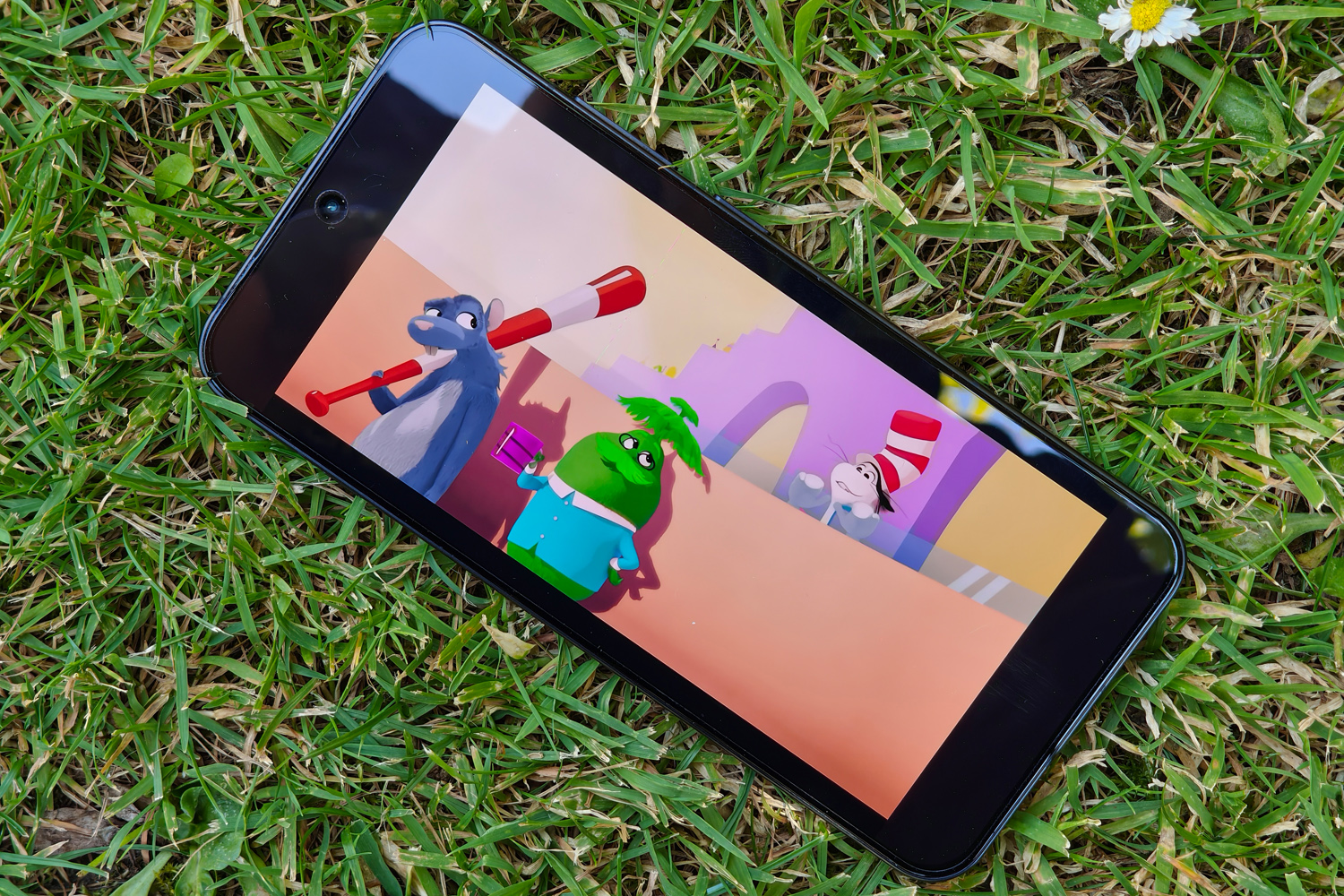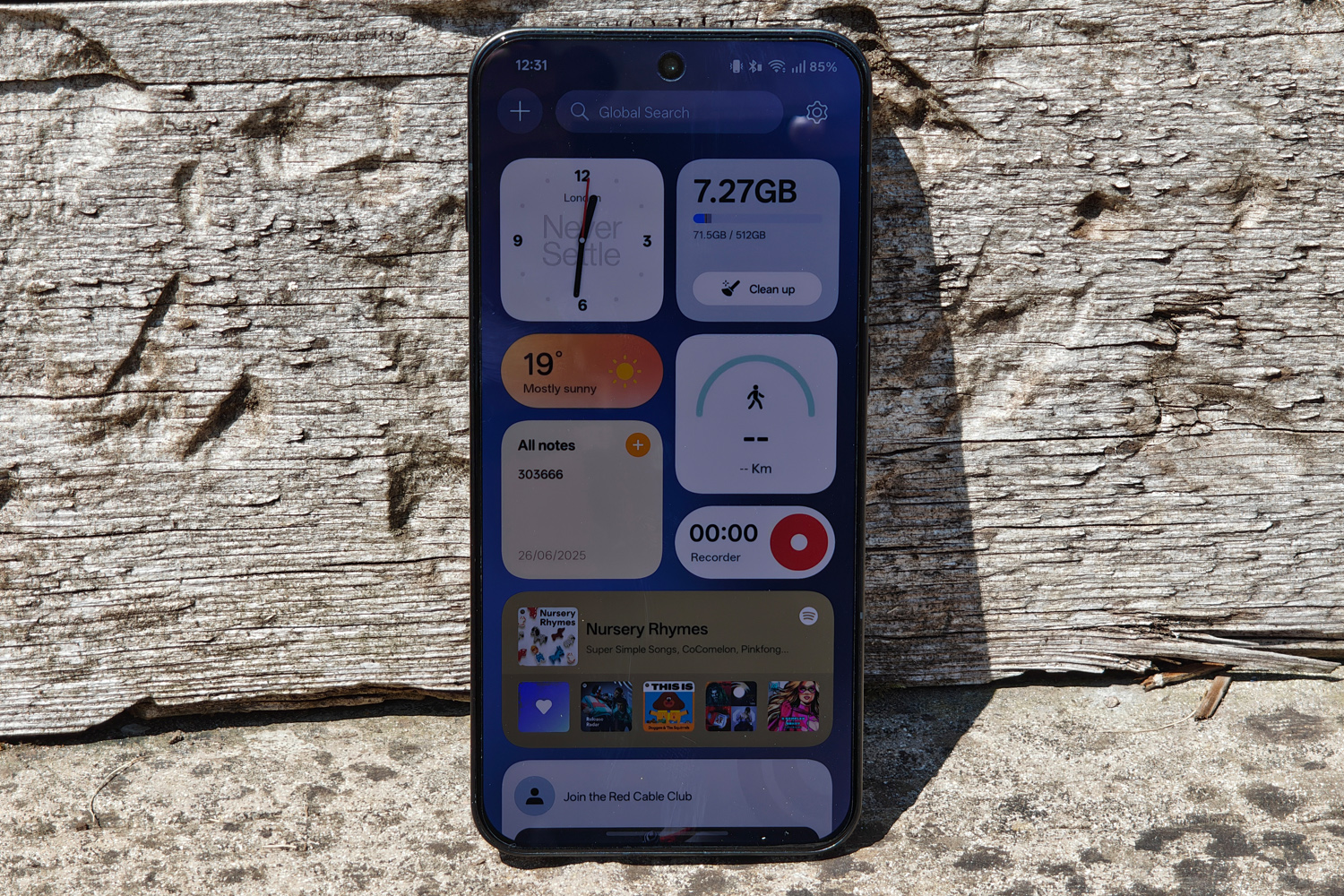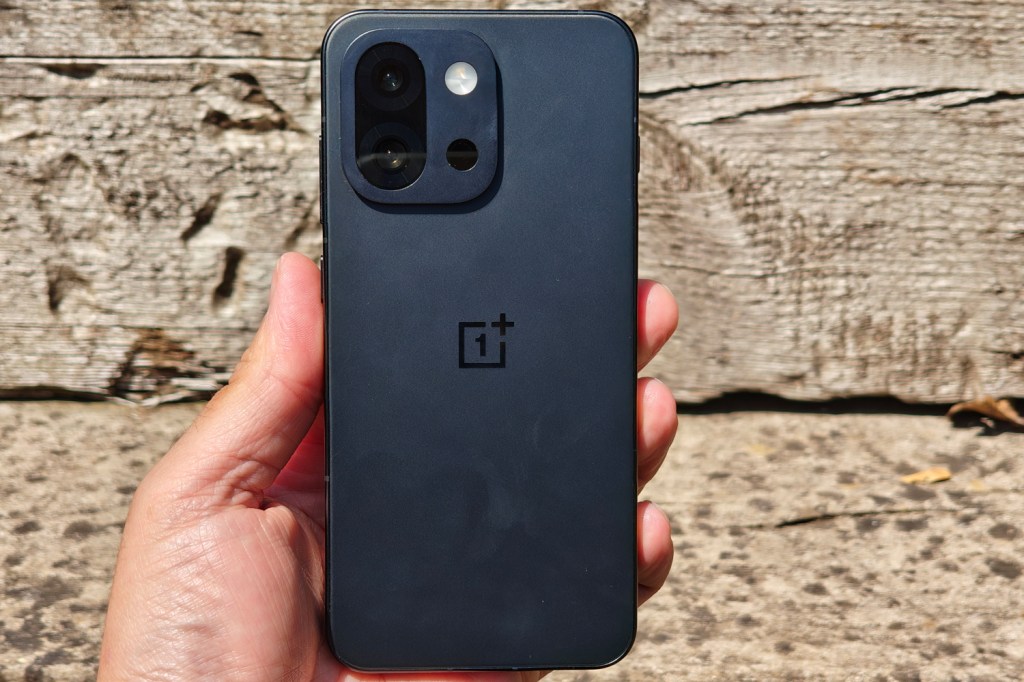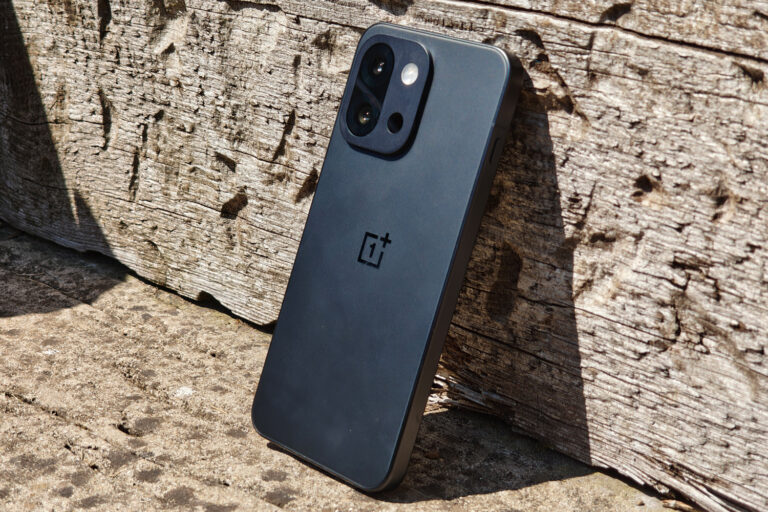Introduction
Does the S stand for small? OnePlus’ latest high-end hero is step into the unknown for the firm, having mainly focused on big-screen flagship smartphones up until now. So much so, in fact, it’s not being released worldwide. The OnePlus 13s is only on sale in India, with a spec sheet – and price – meant to appeal to that audience specifically. However, there could be a strong case for OnePlus fans living elsewhere to import one.
It might be compact, but the 13s is packing a flagship-grade Snapdragon 8 Elite chipset, to help it rub shoulders with far larger rivals in the performance stakes. Then there’s the colossal battery, which should give it impressive staying power. Finally, the ₹54,999 retail price (roughly $650/£470) pits it against more mid-range competition like the Google Pixel 9a and iPhone 16e.
After spending a few weeks with one as my main phone, I’m more than a little sad OnePlus doesn’t want to offer the 13s out to the wider world.
Design & build: fun-size
The OnePlus 13s fits the modern definition of “small phone”. It’s a teensy bit larger than the iPhone 16 and Galaxy S25; on par with the Pixel 9; and slightly smaller than the Xiaomi 15. Either way, it’s still far easier to hold than the 6.7in or larger phones that are pretty much the norm everywhere else.
With a flat metal mid-frame, flat screen and flat rear glass, this phone feels like OnePlus is trying hard to conform with what’s popular elsewhere. The square camera bump around back is like nothing else from the firm’s back catalogue, and looks rather iPhone-esque to me. Cover up the logo etched into the rear glass and even proper phone geeks are going to have a hard time telling this is a OnePlus device.
That’s doubly true once you notice there’s no alert slider any more. The 13s was the first OnePlus phone to swap it for the new Plus key, which can be customised to do more than just change ringer modes, iPhone-style. It doesn’t make a great camera shutter button, as its placement on the right side of the phone means you’re likely to cover it with your fingers; I instead set it to launch the translate app while I was abroad, and the voice recorder when interviewing someone for work.
This phone sits nicely in your hand, with the power and volume keys falling naturally under your thumb (or index finger if you’re a leftie). I also liked how dense it feels. At 185g this is no lightweight, but that helps stop it seeming at all toy-like when you pick it up. The IP65 resistance rating isn’t exactly top-tier, which is a shame, though sweat and unexpected rain shouldn’t cause any problems.
You could see the optical under-display fingerprint sensor as another cutback, given the OnePlus 13 uses an ultrasonic one, but I had no complaints about its speed or accuracy at unlocking phone. OnePlus gets a thumbs up for keeping the IR blaster, too; it came in handy during a recent heatwave when I’d misplaced the remote control for my desk fan.
Screen & sound: small yet mighty

It might be small, but the OnePlus 13s’ 6.32in AMOLED display is still very well equipped. The 2640×1216 resolution looks gloriously crisp from arms’ length, LTPO tech delivers a responsive and smooth 1-120Hz dynamic refresh rate, and viewing angles are excellent.
The unusual 19.54:9 aspect ratio is a little at odds with multimedia content, which can make the punch hole front camera a bit distracting. I can’t fault the visuals, though, with accurate colours, ample contrast, deep, inky blacks and impactful HDR.
Dolby Vision and HDR10+ are both on board, with compatible content really making the most of the peak 1600 nits in High Brightness Mode (HBM). It doesn’t shine quite so intensely most of the time, but I still had no issues with outdoor visibility on sunny days.
It’s a shame the speakers are merely average, though, with somewhat weak sound. There’s lots of volume, but cranking it can’t add any extra weight or body to your tracks. The down-firing driver and earpiece tweeter will do in a pinch, but I’d reach for headphones for anything other than quick YouTube clips or spoken word podcasts.
Cameras: dynamic duo?
The two snappers at the rear of the OnePlus 13s probably aren’t the ones you were expecting. The main lens is straightforward enough – a 50MP unit with f/1.8 aperture and optical image stabilisation – but it’s paired with a 2x telephoto. A lot of phones will opt for an ultrawide instead and use sensor cropping for 2x zoom, so the 13s will need to show a clear quality advantage to justify its hardware.
Things are more clear cut around the front. The 32MP selfie camera has autofocus – a first for a OnePlus phone – and can record 4K/30 video clips. That’s very handy for vlogging, especially when holding objects up to the camera. Stills snaps can be a little soft at full resolution, but they are wonderfully sharp once you resize them down for social sharing.
Image quality from the lead lens is decent, rather than class-leading. Colours are vibrant, contrast is strong, and there’s a good amount of detail on display, apart from areas of scenes in very dark shadow. HDR does a good job of preserving highlights alongside areas of shadow without going overboard like, say, Samsung. That it’s on par with the OnePlus 13R won’t come as a shock, given the two phones are using identical hardware.
It holds up rather well in low light, too, as long as you have a steady hand for the longer exposure time. Google is still the champ here, with a better balance of light and shadow, and a willingness to let some noise into the shot in order to preserve detail.
There’s no macro mode here; the main camera instead digitally crops in at 2x. The resulting shots can’t match rivals with proper macro zooms, being slightly soft even if colours are handled well.
OnePlus has managed to closely match the telephoto and main sensors for colours, contrast and exposure. There’s a good amount of detail on display at the native 2x magnification, though shots are generally softer than from the lead lens. The camera app has a 4x toggle, which crops the 50MP sensor for effective extra zoom that holds up rather well under scrutiny.
Software experience: familiar features

It might be aimed exclusively at the Indian market, but the 13s’ version of OxygenOS isn’t really any different to the one you’ll find on other OnePlus phone. Open Canvas still makes split-view multitasking a breeze, even on a smaller screen, and there was a refreshing lack of software bloat following the initial setup.
The overall look and feel is clean, easy to navigate, and not all that dissimilar from Google’s stock layout. The only standout is the widget ‘shelf’ that can be accessed with a downward swipe on the home screen, which is handy for keeping the home screen itself free from clutter.
OnePlus does include a bunch of its own apps, including a file manager, notes app, image gallery and voice recorder. Google’s defaults are on hand too if you prefer, but doing so will skip out on some AI additions. There’s a generative writing assistant in the notes app for reformatting and extending text; the voice recorder can transcribe and summarise your audio; and the gallery has generative expansion, object removal and reflection-busting abilities. They’re just as effective here as any I’ve tried on rival phones, with most of the heavy lifting handed off to the Cloud. Then there’s the Mind Space, which analyses screenshots and summaries any info, separate from your image gallery. Motorola and Nothing offer something similar.
OnePlus lags behind Google and Samsung on update promises, but four years of new Android generations and six years of security patches is still a respectable effort.
Performance & battery life: power by the hour
OnePlus has opted for maximum performance potential by fitting the 13s with a Snapdragon 8 Elite chipset – the same one you’ll find in the larger OnePlus 13. A vapor chamber cooling system and graphite sheet heat spreader help keep temperatures in check, so the phone’s small stature doesn’t hamper its ability to crunch through apps and games.
Paired with 12GB of RAM, it’s unsurprisingly rapid – if not quite a match for the OnePlus 13 in benchmarks. It’s having to lower its clock speed a little faster to keep heat at bay, but not by much. This is still a properly fast phone, with excellent scores across the board even under sustained load. It’s easily faster than a Pixel 9, and also outpaces the Galaxy S25 in many tests.
That translates into impeccable everyday use, with rapid app loads, smooth multitasking, and the smoothest of animations. Games were no struggle at all, with all the ones I tried defaulting to their highest detail settings and running pretty much flawlessly. Only a few titles actually work with the 13s’ high refresh rate display, but everything else consistently topped out at 60fps.
| OnePlus 13s benchmark scores | |
| Geekbench 6 single-core | 2830 |
| Geekbench 6 multi-core | 8497 |
| Geekbench AI | 3860 |
| PCMark Work 3.0 | 13,770 |
| 3DMark Wild Life Extreme | 6173 |
| 3DMark Solar Bay | 10,295 |
As much as CPU grunt is nice to have, it’s the OnePlus 13s’ battery life that truly impressed me. The firm has managed to squeeze a giant 5850mAh cell beneath the 6.32in screen – which, don’t forget, has fewer pixels to push than larger rival phones. Simply put, I’ve never used such a small phone that could last as long as this while still being so powerful.
A morning spent running a 5G hotspot, streaming YouTube videos, using GPS navigation and taking photos only ate 20%; by the time I got home late that evening, I still had close to 40% remaining. On more typical days, I’d sometimes still be north of 50% before heading to bed. That’s better than anything the Pixel 9, Galaxy S25 or iPhone 16e can manage.
While there’s no wireless charging here – likely an effort to keep the price in check – 80W wired refuelling is suitably speedy. An empty-to-full charge takes under an hour, while 15 minutes is almost good enough for 50%.
OnePlus 13s verdict

Fans of powerful but compact phones have been relatively under-served lately, with Apple, Samsung and Google taking the lion’s share and Xiaomi bringing up the rear. Now you can count OnePlus in the mix as well. The OnePlus 13s stands out from its rivals with simply outstanding battery life, and it’s got serious performance muscle for such a small handset.
It gives up a few flagship features, and the two rear cameras aren’t the greatest pairing, but slick software and rapid wired charging go a long way to make up for it.
Had OnePlus launched the 13s globally, I’d have no trouble recommending it – the battery life really is that good. If you live in India – or are willing to import – it’s absolutely worth a look over a Galaxy S25 or Pixel 9 if you value time spent away from the mains.
OnePlus 13s technical specifications
| Screen | 6.32in, 2640×1216, 1-120Hz AMOLED |
| CPU | Qualcomm Snapdragon 8 Elite |
| Memory | 12GB RAM |
| Cameras | 50MP, f/1.8 w/ PDAF, OIS + 50MP, f/2.0 telephoto w/ PDAF, 2x optical zoom rear 32MP, f/2.0 front w/ autofocus |
| Storage | 256/512GB |
| Operating system | Android 15 w/ OxygenOS |
| Battery | 5850mAh w/ 80W wired charging |
| Dimensions | 151x72x8.2mm, 185g |
Read the full article here
